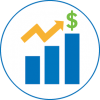Market Insights: Ethoxylates - 2021
This report provides analysis and forecast to 2035 of the global ethoxylates market, including supply of ethoxylates, commentary on the upstream value chain and demand into household, personal care and others.
Market Insights: Ethoxylates Value Chain - 2021 includes discussion regarding key market drivers and constraints, as well as demand analysis for nine regions: North America, South America, Western Europe, Central Europe, Eastern Europe, Middle East, Africa, Asia Pacific, and China. Analysis also includes the competitive landscape, capacity listing and cost competitiveness along with a snapshot of latest pricing trends by region and price forecasts to 2035.
Abstract:
Ethoxylates are a variety of compounds produced from the reaction of ethylene oxide with lipophiles such as aliphatic alcohols (e.g., fatty alcohols), alkyl phenols or fatty acids of various hydrocarbon chain lengths (lipophile are substances which tend to combine with or dissolve in lipids or fats - from Greek, lipo means fat and philic friendly), Most ethoxylates are non-ionic surfactants. The industrial usage of a surfactant largely depends on the surfactant class. Unlike other surfactant classes, non-ionic surfactants are less sensitive to water hardness. They are strong emulsifiers and can be used as defoaming agents as they tend to produce less foam than other surfactants. Their compatibility with other ionic surfactants means that they can be used either as an alternative or in a complementary role to anionic surfactants (e.g., linear alkylbenzene sulfonates). If used in substantial concentration, they help to solubilize calcium or magnesium salts of LAS and are often used in powder laundry detergents combined with LAS. They are also resistant to high temperatures. As such, non-ionic surfactants are typically included in most household (detergents) or personal care product (cosmetics) formulations. Alcohol ethoxylates (AE) are the ethoxylates with the highest demand. They are often processed further to alcohol ether sulfonate (AES). Nonylphenol ethoxylate (NPE) accounts for around 80 percent of alkylphenol (APE) demand. Octylphenol ethoxylate (OPE) accounts for the other 20 percent. Others include EO/PO copolymers and fatty acid ethoxylates.
 Markets and Profitability
Markets and Profitability  Technology and Costs
Technology and Costs  Special Reports
Special Reports